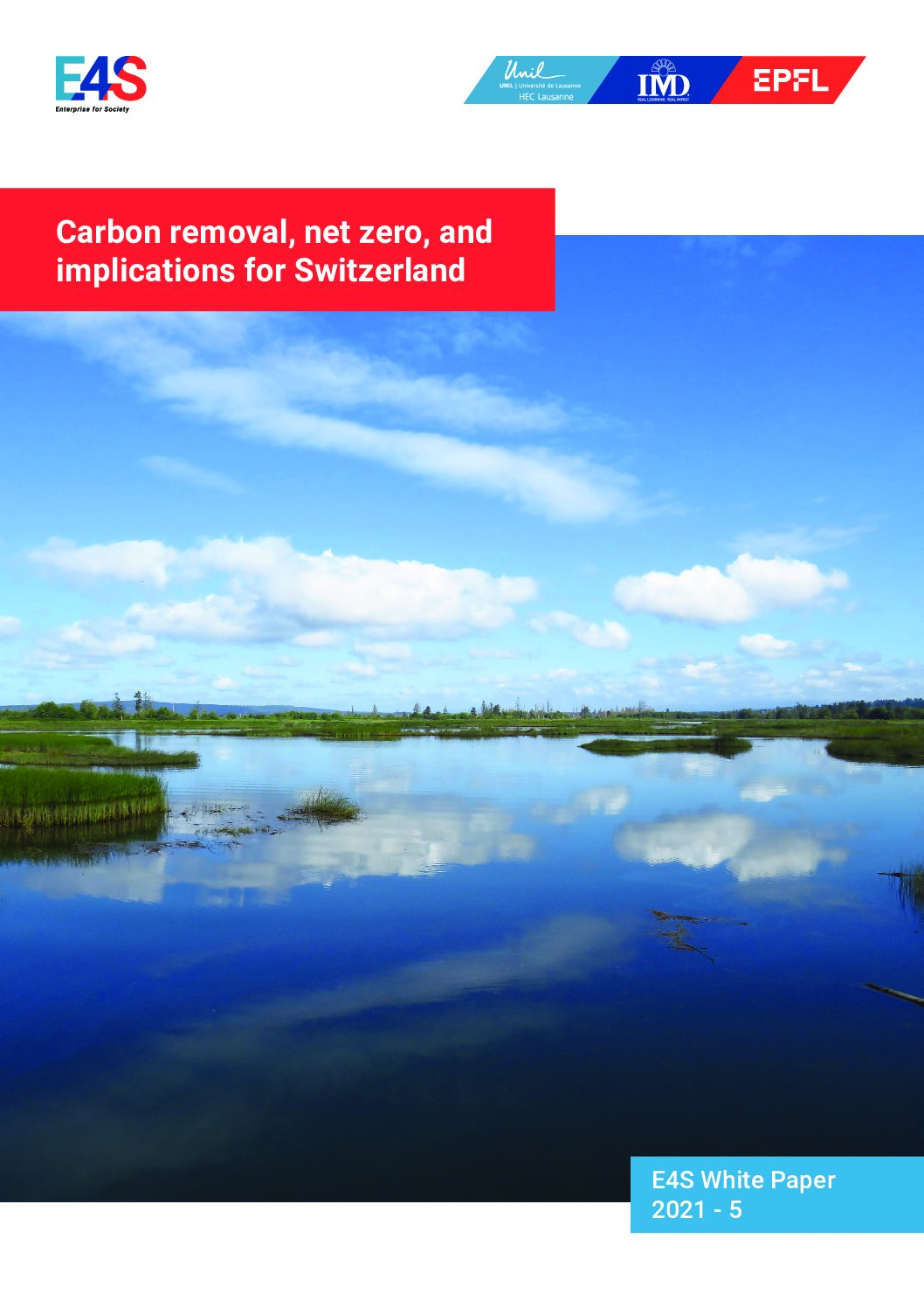
This E4S white paper provides an overview of carbon removal in the context of climate action towards net zero, covering the main points policy-makers and organizational leaders should keep in mind. We will make the case for carbon removal, which in this paper includes carbon capture, utilization and storage (CCUS) and negative emission technologies (NET), as an important but small part of climate action in the 2-3 critical decades we have to stabilize our climate and stop biodiversity loss.
This insight is key for properly designing and governing carbon removal, as a complement to deep emission reductions based on sufficiency, efficiency, and clean energy. We will argue that CCUS and NET are important contributions to broader climate action, with potential limited to several percent of current emissions. This is not a contradiction: no single approach will solve the climate crisis.
After decades of climate inaction and ever-increasing emissions, despite increasingly urgent and precise warnings by the IPCC, several successful international agreements (Kyoto, Paris), unprecedented mobilization of the civil society around the world, and more frequent extreme weather events (flooding, drought, fires, temperature extremes) – the time to act is running out, if we want to keep warming within 1.5°C above pre-industrial times. We have less than a decade to globally halve emissions1 , and less than 30 years to reach -90%. We may need costly, difficult to implement measures like carbon removal, which we could have easily avoided with timely reductions.
To stay within 1.5°C warming, IPCC’s AR62 , published in August 2021, defines the remaining carbon budget we can safely emit at 300-400 Gt CO2 . The 300 Gt limit will be reached around 2027- 2028, unless we massively reduce our emissions almost immediately. This extremely short window limits the role of technologies still in R&D, and the time to deploy existing ones – suggesting an emphasis on policy, behavior, and economic measures.
In this context, carbon removal, both CCUS (carbon capture before it reaches the atmosphere) and NET (negative emissions, removing carbon from the air and storing it at climate-relevant time scales) will have an important role to play. Today, carbon removal beyond the fast natural carbon cycle (i.e. photosynthesis and storage in living biomass and soils) is experimental and small-scale. Worldwide, it is highly unlikely to scale beyond 5-10% of current emissions (i.e. 3-6 Gt CO2 e)3 , at least in the 2-3 critical decades to come, during which we must stabilize the climate (IPCC AR6 WG3 will include a new estimate). Yet it can still provide significant climate benefits such as reaching net zero if combined with deep decarbonization.
Climate warming affects humans directly and indirectly, by degrading ecosystem services on which we depend for survival, such as food, medicine, pollination, or nutrient cycling4 . Protecting ecosystem services is one of the main reasons for climate action. Many biological carbon removal measures, if properly implemented, can offer significant biodiversity co-benefits, even at relatively small scales.
What carbon removal cannot provide is a stable climate with business as usual, without deep cuts in emissions.